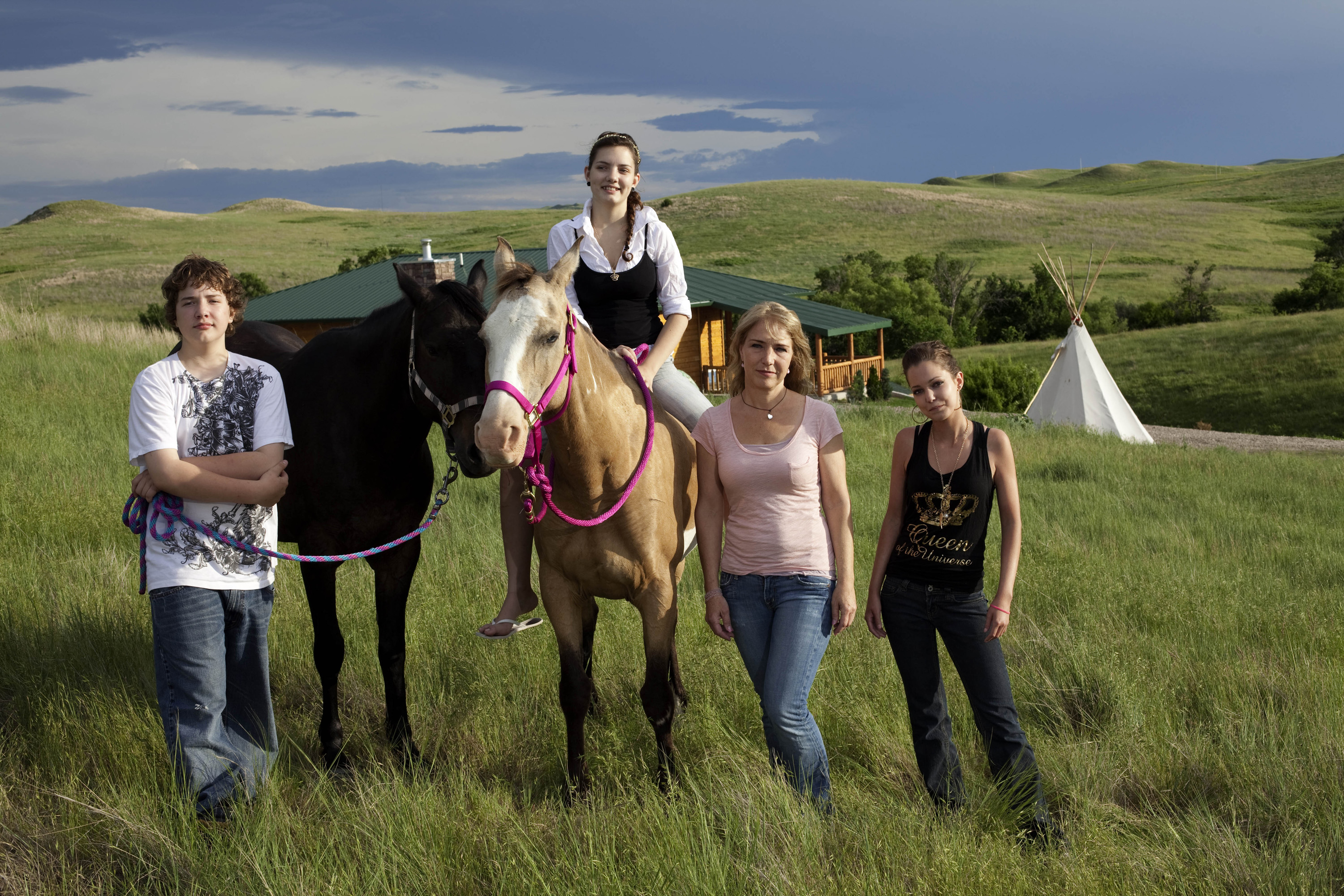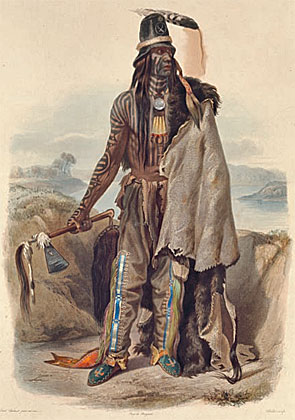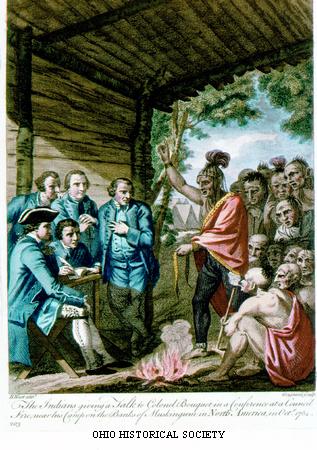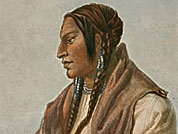A “Swindian” among the Sioux

Swiss woman Isabel Stadnick realised her dream of living among Native Americans when she settled in the Pine Ridge reservation in South Dakota in 1989.
There in addition to raising a family, she works at a school where the Sioux language and culture is passed on to young members of the Oglala Lakota tribe.
Born in Brazil, Stadnick always felt drawn to the northern part of the American continent.
“My interest was not sparked by Western movies, no, it was my intuition, my whole mind was focused on the ‘Indian’ country, I always had this dream and since I was a child, my strongest interest was Indian culture,” Stadnick told swissinfo.ch.
In 1989, when Stadnick was a drama student in Basel, a Swiss travel agency advertised a package to “Sioux country” – a vast territory of plains, valley and mountains which stretches from Nebraska to North Dakota, and from Minnesota to Wyoming by way of South Dakota.
It was just what she had been waiting for. She joined the party, arriving in Denver in June 1989. The guide who met the group at the airport was a Native American from the Pine Ridge reservation.
Stadnick was bowled over – both by Robert Stadnick and by the country native to the Sioux, a group composed of three tribes: the Dakota, the Nakota and the Lakota.
She married the guide two months later, and the couple went on to have a son and two daughters, known as “Swindians” in the Pine Ridge reservation, because of their Swiss and Lakota parentage.
Isabel Stadnick, although not a member of the tribe, could be considered an honorary “Swindian”, thanks to her love of the Lakota and devotion to their cause.
In 1994 her husband opened a nursery school in Pine Ridge. After his death, three years later, Stadnick dedicated herself to the school, which combines education in the Lakota language and culture with the Waldorf teaching method, inspired by the anthroposophy of Rudolf Steiner.
Prejudice
“Parents wanted to address the needs of children here on the reservation, they looked at Montessori and other teaching methods, but they came to the conclusion that Waldorf was the closest to the way Lakota children are raised, the Lakota call it learning with head, hand and heart,” she said.
The Pine Ridge children face extraordinary challenges. They are American but are marginalised. Their reservation is remote, geographically, economically and culturally. Rapid City, the only city in the region, is 200 kilometres away.
“When I go to Rapid City, I’m shocked because it’s really another world,” said Stadnick.
The governor of Dakota proclaimed 2010 the year of reconciliation between whites and Native Americans, but Stadnick is not convinced.
“There’s still a huge gap between the two communities and lots of prejudice, more on the part of Whites than on the part of Indians,” she said.
The Pine Ridge reservation holds the record for poverty in the United States. “Many Lakota people live without electricity here, many don’t have a telephone or running water,” said Stadnick.
Not easy or romantic
On the reservation, infant mortality is five times higher than the national average. The rate of those dropping out of education is close to 70 per cent and unemployment is more than 80 per cent. The suicide rate is twice the national average, and four times as high among adolescents. Life expectancy is only 49.
Hardly an idyllic place for Stadnick to put down roots. On top of that, her parents objected to the move.
“They thought it was far from Switzerland and they had a bit of fear about me living on a reservation,” she said, and admits that Indian country is “very different from what one can imagine or what we read in books”.
“It was not easy, not romantic,” she said. Apart from culture shock and the living conditions, she had to adjust to the harsh landscape and climate.
“It’s very difficult to describe in a few sentences. You have to stay here through the year. Winters are very rough. You need to be able to be on your own and some people can’t live that kind of life.”
Dancing with Wolves
The region featured in the Kevin Costner film “Dancing with Wolves” in 1990.
“I liked Kevin Costner’s movie because he hired people from the reservation to work on it, but afterward, some people here were upset because the film made him very rich and he was gone,” recalled Stadnick.
For Stadnick, Pine Ridge represents values that she endorses.
“The Lakota culture is very rich and very spiritual, I mean ritual ceremonies like sweat lodges are one of the most important things in life. It’s very different in Switzerland where we measure people by what we have and by how fast we go up a career ladder.”
“I love Switzerland but right here, this is my home.”
Founded by the Stadnicks and other Pine Ridge inhabitants in 1994, its methods are inspired by anthroposophy and the Lakota culture.
Teaching at the school, which includes a kindergarten, is in English and Lakota.
18-20 children study there at a time.
Budget for the school year 2010-2011 is $215,000 (SFr195,000). There is no cost for attendance.
Three foundations and 60 American donors cover 40% of the budget; the rest comes from European donors, including 445 Swiss.
Born February 10, 1957 in Rio de Janeiro to Swiss parents. She grew up in Basel.
Left for the US in 1989 and married the Lakota guide Robert Stadnick of the Pine Ridge reservation.
Widowed in 1997, she moved back to Switzerland with her children, but made regular visits back to Pine Ridge.
In 2008 the Stadnick family moved back to Pine Ridge, “for good”.
In 2009 she published her autobiography, Wanna Waki (Life among the Lakota), in Switzerland.
(Translated from French by Morven McLean)

In compliance with the JTI standards
More: SWI swissinfo.ch certified by the Journalism Trust Initiative



You can find an overview of ongoing debates with our journalists here. Please join us!
If you want to start a conversation about a topic raised in this article or want to report factual errors, email us at english@swissinfo.ch.